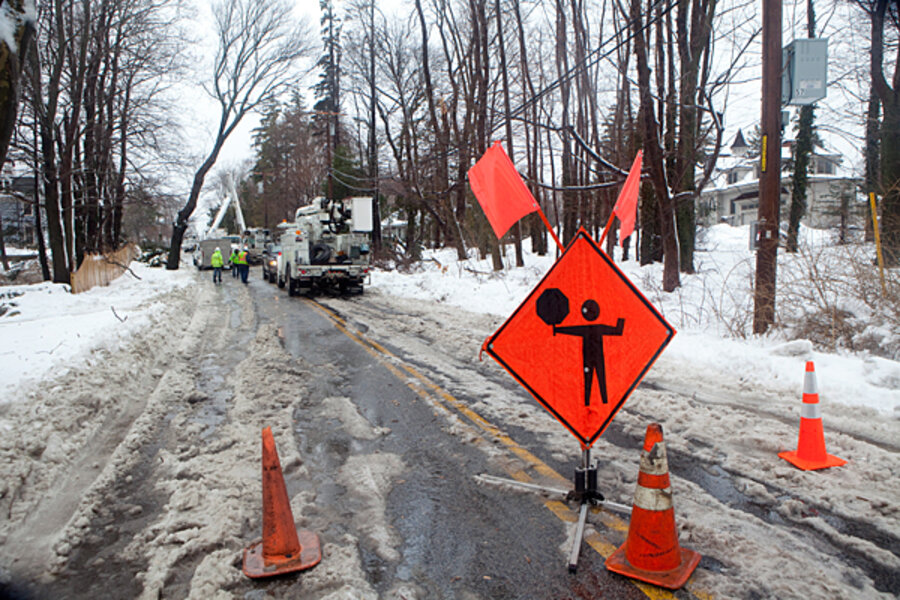Epic blizzard over, but Northeast is still reeling … and now rainy
Loading...
The Northeast’s big snow of 2013 is over, but not its aftereffects.
The region's residents are still digging out, navigating roads lined by walls of snow, and in some cases dealing with school closures and power outages. Now comes rain.
The weather forecast for Monday called for roughly half an inch to fall from New York to Boston – the same region just pelted with as many as three feet of snow on Friday and Saturday. That has raised worries of potential roof collapses and a soupy mix under foot that could freeze overnight.
Many people trekked back to work on Monday on newly reopened transit systems, but one online message revealed the storm’s ongoing impacts:
“We continue to work to mitigate the effects of the storm,” said the town website for coastal Scituate, Mass., citing challenges with power outages, floods, and plowing streets with parked cars, and “structural damage to some roads.”
The storm set records for snowfall in some communities, including Portland, Maine. Connecticut communities tallied the largest snowfalls, with some 40 inches falling in Hamden. The states of Massachusetts, New Hampshire, and New York also saw some tallies exceed 30 inches.
In Boston, this storm's two-foot totals fell a few inches short of matching the city's record.
But cities were still digging out Monday, and some major school systems including those in Boston and Hartford, Conn., were closed for the day.
The storm was also blamed for at least 15 deaths in the US and Canada, including some from carbon monoxide poisoning when car tailpipes were clogged with snow, the Associated Press reported.
In many ways, however, the region came through the storm remarkably well. Although power outages affected more than half a million utility customers, millions more weathered the high winds unscathed.
By Monday morning, power had been restored for most. In Massachusetts, where most of the outages occurred, about 121,000 NStar or National Grid customers still lacked power as of late morning.
Boston’s “T” subway system began restoring service on Sunday and was running a normal schedule (but with warnings of delays) Monday for customers, including bus and commuter-rail riders.
The region’s airports, which had to cancel thousands of flights Friday and Saturday, are operating most of their regular flights once again. The travel tracking website FlightAware reports that none of the major airports, from Boston to Newark, is seeing cancellations of more than 20 Monday flights.
As Monday’s rain arrived, owners of homes and businesses could be thankful that roofs were laden with relatively light loads of snow, compared with what might have occurred if the storm hadn’t packed such strong winds.
And over the weekend, the blizzard that the Weather Channel called Nemo brought some joy as well as shoveling work to families. Many New Englanders went out to sled, ski, snowshoe, or play under sunny skies.






